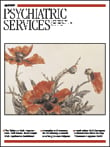P sychiatric Treatment of Sexual Offenders aims to be a concise, yet thorough, resource on the current state of treatment of sexual offenders with a humanistic approach. It is generally successful at this goal. What the book does well is provide summaries of the literature in such a way that readers feel as though they are hearing from a full range of voices on each topic. References are used so frequently that it is unusual for a page of this book to contain less than four different sources. At each point of interest Dr. Marvasti quotes several authors' opinions and generally creates a good narrative flow. Given the volume of literature reviewed, this was no small task.
Unfortunately, in creating a good narrative flow, what can be lost is a critique of the quoted sources. Data are rarely provided, and when they are it is usually the number of patients in the study and the frequency of comorbidity. We found ourselves often wondering more about the quoted sources, especially when it came to treatments. The descriptions of therapies for sexual offenders are intriguing intellectually, but no data are given to support the effectiveness of any of these treatments. After 30 pages of descriptions of nonbiologic sexual offender treatments, Dr. Marvasti mentions that no program has been able to prove success at reducing recidivism and finally begins to address our question on page 95.
The chapter on pharmacotherapy and surgical treatments is impressive in both its thoroughness and its brevity. As a psychiatrist, Dr. Marvasti would likely know this area best, although he has reportedly worked primarily as a therapist at a clinic specializing in treatment of sexual offenders and their victims for the past 16 years.
Some redundancy is in the book, such as chapters 1 and 2 starting prominently with definitions of paraphilia and pedophilia and other overlapping content. Both of the first chapters tend to be definition heavy and relatively dry to read, especially given the attention-grabbing subject matter.
As relative newcomers to this field, we found the book to be a helpful introduction to current biologic and nonbiologic treatments for sexual offenders. What is lacking is some further editing to make the book more coherent as a whole, more critical comments from the author about his quoted sources, or at least selected data which would have allowed the readers to provide their own critiques.

